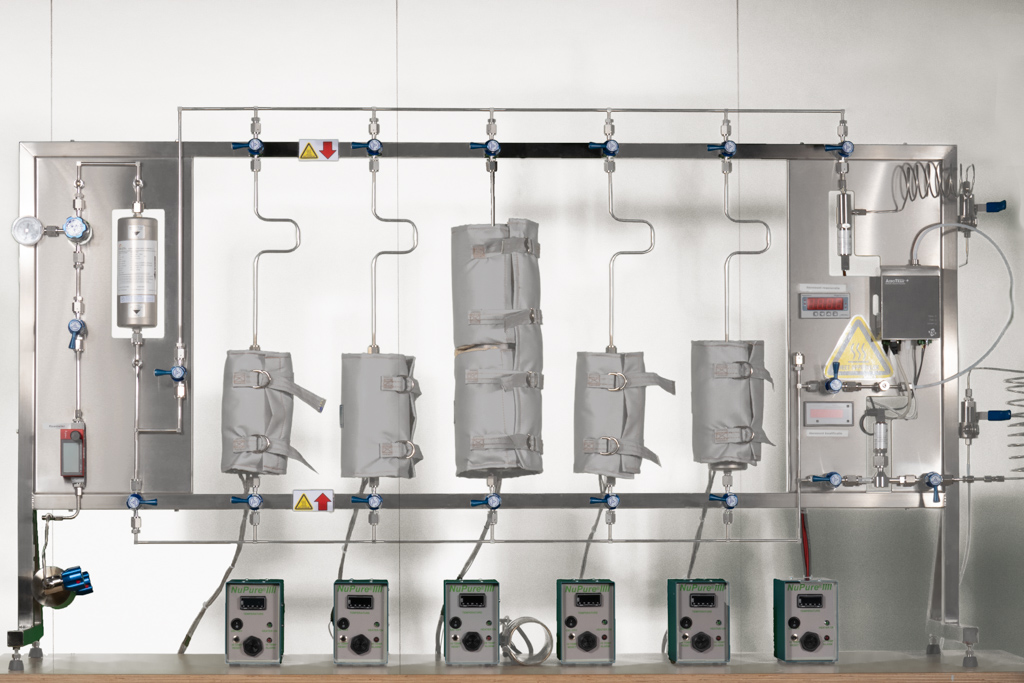How does a purifier work?
4 types of chemical purification of gases explained
The need for cleaner gases is increasing. Not only in the semiconductor industry, but also in pharmaceuticals, hydrogen economy and research. Clean gases are essential for maximum process reliability. Gases such as CDA (Clean Dry Air), CO2 and hydrogen are often purified to a significantly higher downstream quality. The gas contains very little impurities < 0.1 ppb (parts per billion) and has a purity of 99.9999999% (9N). Filters and purifiers are used in the production of clean gas. The 4 most used technologies are explained here.
Technology of purifiers
In this article, we try to help engineers make design choices by explaining the 4 different purifier methods. These are:
- Getter
- Reactive catalyst
- Catalytic
- Adsorber
1. Getter type purifiers
Irreversible reaction with zirconium
Purifiers of the getter type use zirconium alloys to purify gases. Zirconium alloys are highly reactive with a wide range of gases that are often contaminants, such as:
- CO, carbon monoxide
- CO2, carbon dioxide
- N2, nitrogen
- O2, oxygen
- H2, hydrogen
The reactions that take place in the purifier are irreversible and form oxides, nitrides and carbides.
- CO + Zr => ZrO + ZrC
- CO2 + Zr => 2 ZrO + ZrC
- N2 + Zr => 2 ZrN
- O2 + Zr => 2 ZrO
- H2O + Zr => 2 ZrO + 2H

Illustration: The getter purifier principle works better at high temperature because diffusion of impurities into the granules is promoted.
Heated getter purifiers
In getter purifiers the vessel is filled with grains, pellets or granules of the zirconium alloy. The flowing gas hits the pellets on the outside and that is where the reactions will take place. The gases which form a pollutant can diffuse into the pellets but will do much better under a heated atmosphere. Getter purifiers can therefore work well under room temperature but in many cases the efficiency becomes acceptable only when the pellet is heated so that diffusion is improved. In that case we call the getter purifier a heated getter purifier. Two terms often used interchangeably.
Hydrogen is an exception. It reacts inversely with temperature: the lower the temperature, the higher the purification capacity for hydrogen, and at higher temperatures its reactivity decreases.
Advantages of getter purifiers
- Best technology to remove nitrogen from inert gases at low temperature.
- Can be nitrided or hydrated for purification of N2 and H2 and mixtures thereof.
Disadvantages of getter purifiers
- Not regenerable, only replaceable.
- Has a hazardous materials classification because it is spontaneously flammable.
- If a high operating temperature (heated getter) is chosen, this involves higher operating costs.
Applications of getter purifiers
2. Reactive catalyst purifiers
The gases that form a contaminant react with transition metals. Examples are nickel and copper.
The aim is to maximise the surface area between the process gas and the metal. To this end, the metal is deposited on inert substrates that are finely structured. For example, aluminium oxide, silica or diatomaceous earth (photo).
The metals used are highly reactive with a variety of gases often classified as contaminants, such as:
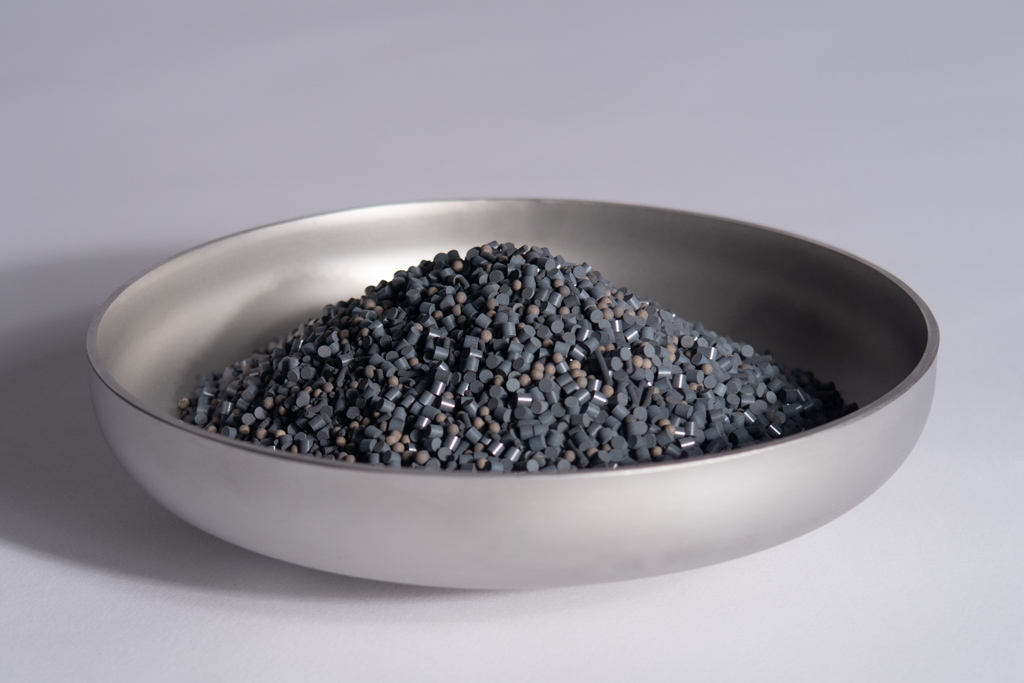
Photo: An example of a granulate from a purifier, consisting of 4 different components.
- CO, carbon monoxide
- CO2, carbon dioxide
- H2, hydrogen
- H2O, water
- O2, oxygen
The major advantage of this technology is that the reactions that take place are so-called chemisorption reactions and are therefore reversible. A few examples:
- Ni + CO => NiCO
- 2Ni + O2 => 2NiO
- Ni + H2 => 2NiH
The performance of this type of purifier is strongly influenced by the shape of the surface on which the deposition of the nickel or copper has taken place.
Advantages of reactive catalyst purifiers
- Operates efficiently at ambient temperatures Low COO compared to getter technology Can be conditioned for purification of H2 and many other types of contaminants: CO2, halogens, corrosive gases. Can purify a wide range of gases: CO2, halogens, some corrosive and hydride gases.
Disadvantages of reactive Catalyst cleaner
- Is less good at removing light hydrocarbons. The purifier medium has the classification of dangerous goods and is spontaneously flammable.
Applications of reactive catalyst purifiers
The reactive catalyst purifier type is probably the most widely used purifier type, due to its versatility and reusability. The multitude of applications falls into three main groups:
3. Catalytic type purifier
The catalytic purifier is made of palladium or platinum. It initiates chemical reactions but does not participate in them. A low percentage of metal is deposited on an inert substrate with a large surface area. They are used to reduce THC, CO, H2 from high PPM levels to low PPT levels.
This type of purifier is a real catalyst and the medium is not consumed.
Advantages of the catalitic purifier
- No defined maximum lifespan.
- No regeneration required.
- Efficient removal of THC without risk of exothermic reactions.
- Can be widely applied (CDA, CO2, O2, noble gases and many more).
Disadvantages of the catalitic purifier
- High operating temperature
- The reactions produce waste products that must be purged through a separate adsorber purifier in the outlet line
- High acquisition cost (CAPEX)
- High operating cost (OPEX)
Applications of the catalytic purifier
The catalytic purifier is probably the least frequently used purifier type. Especially in UHP applications of oxygen this type is used. Especially for the removal of hydrocarbons from O2.
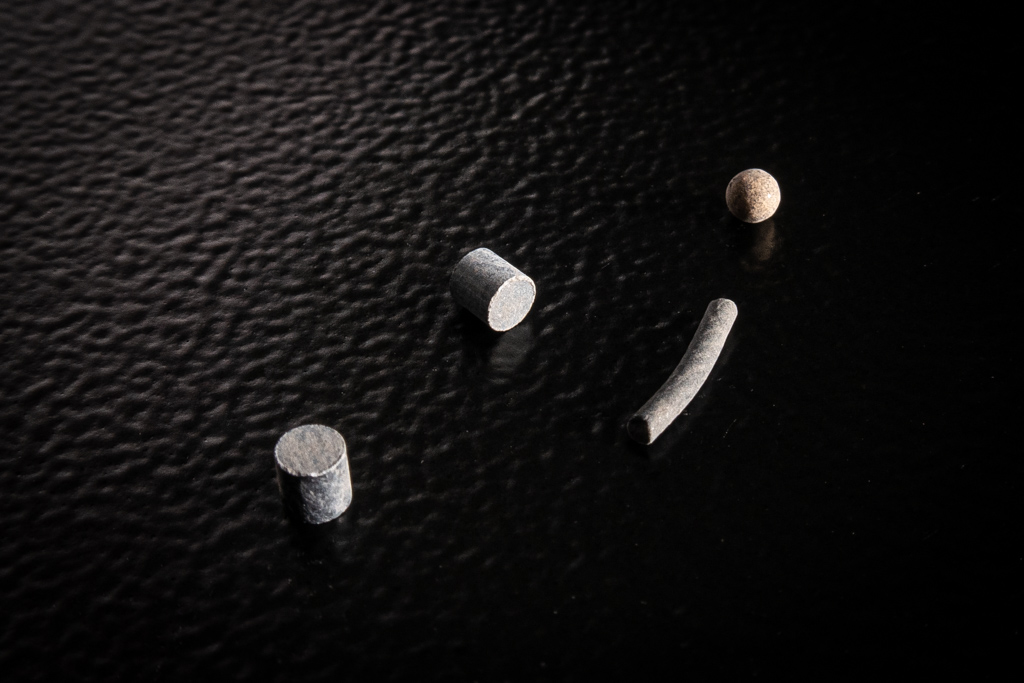
Photo: Four different types of granules for purifiers. The shape differs to control absorbency.
4. Adsorber type purifiers
The adsorber purifiers are actually molecular sieves. Often constructed from silica gel or carbon. This principle is also applied on the consumer market. The adsorbers are very efficient for certain impurities. Carbon dioxide CO2, water H2O, acids, bases and heavy hydrocarbons are particularly well removed.
The adsorber removes impurities by physical adsorption which makes the efficiency dependent on the pore size. The reactions take place on the surface without diffusion in the bulk. The adsorber granulate is very porous to increase the surface area.
Advantages of the adsorber type purifiers
- Works efficiently at room temperature. Regenerable.
Disadvantages of the adsorber type purifiers
- Cannot remove light hydrocarbons such as methane. Some types are NOT regenerable.
Applications of the adsorber type purifiers

Photo: Purifiers are always provided with filters on the inlet and possibly also the outlet. The particle size varies from 1μm to 1.5 nm.
Subcategories
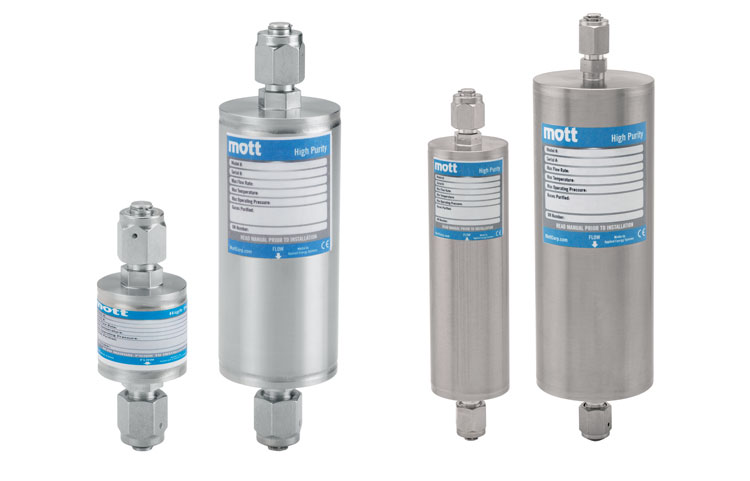
Point-of-use gas purifiers
Are installed directly at the place of the consumer. Usually with a flow rate of 0.1-100 slpm.
More information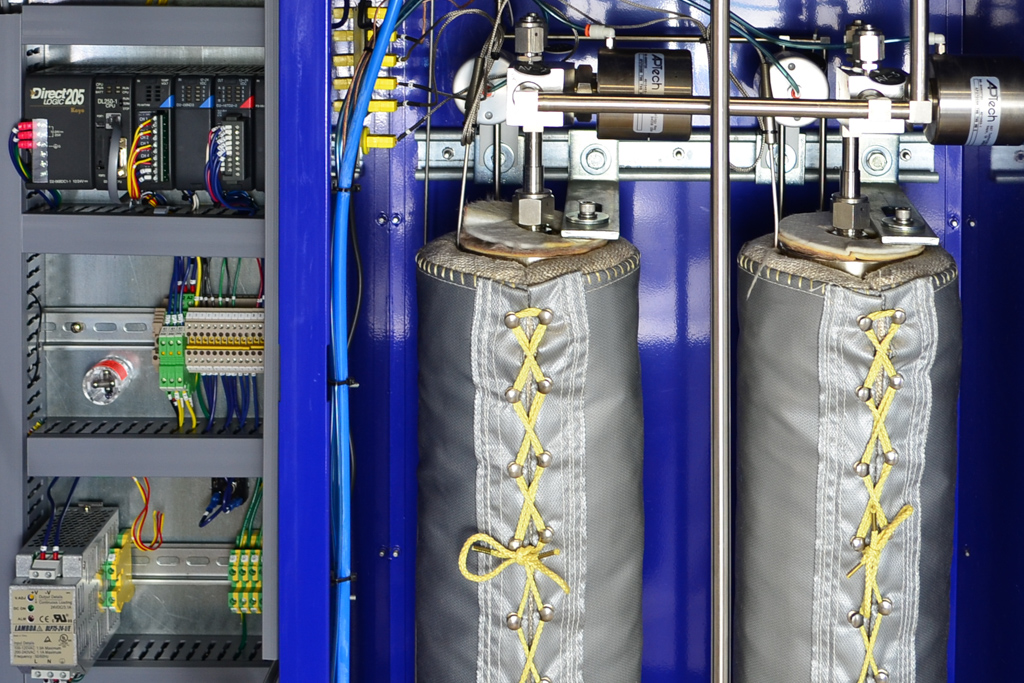
Micro-bulk gas purifiers
Also called Area purifiers. Are often used to feed a number of machines with ultra pure process gas. Nominal flows 100-1200 slpm.
More information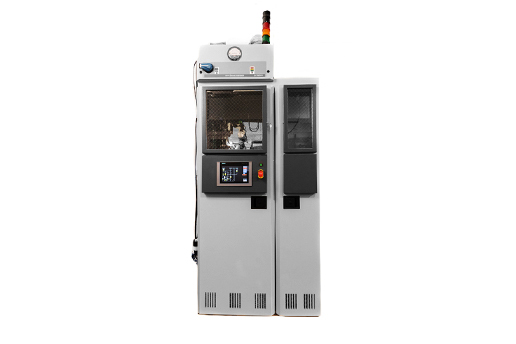
Bulk gas purifiers
Gas supply in semicon fabs, or at industrial gas suppliers. Flows of 60-20.000 nm3/h.
More informationAny Questions?
More information about our products, services or looking for a custom solution?
Please contact our Sales Engineers.

WE MAKE YOUR TECHNOLOGY WORK
NL - Tel. +31 70 413 07 50
USA - Tel. +(1) 973 383 0691
CN - Tel. +86 (10) 56865822/56865835
TW - Tel. +886-(0)3-5600560
